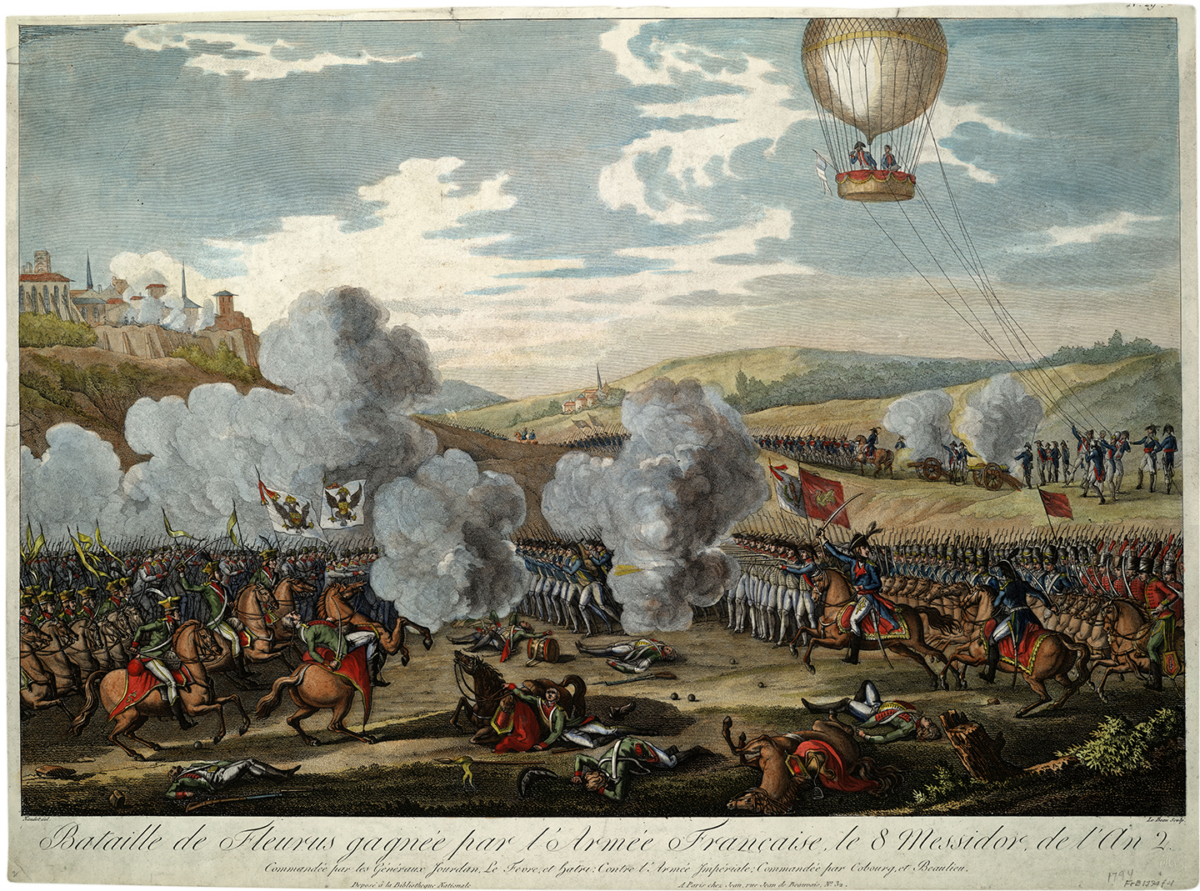Long before the advent of satellites able to track individual soldiers from space, even before the introduction of planes fitted with cameras able to capture static photographs of the landscape, commanders sought a means of placing eyes in the sky to observe a battlefield at a glance like a map, rather than piecing together possibly conflicting reports from frontline officers and scouts. At the Battle of Fleurus in 1794 the French army realized that ambition.
By 1794, the French Republic, having pushed back invasions from a coalition of European powers in the wake of the French Revolution, found itself on the offensive in the Austrian Netherlands. Earlier that year, in keeping with their revolutionary scientific spirit, the French had organized the Compagnie d’aérostiers, or Aerostatic Corps. Led not by a soldier but by chemist Jean-Marie-Joseph Coutelle, the corps faced its first test on June 26 at the Dutch town of Fleurus.
To gain an edge, Coutelle brought the corps’ only balloon, l’Entreprenant (“The Enterprising One”), and positioned it on a hill overlooking the battlefield. Aloft for the entire nine-hour clash, the balloon operators made detailed notes of coalition troop movements and either signaled intelligence to the ground in semaphore or simply dropped their notes from the basket. Its operators and L’Entreprenant, the first balloon used for military purposes, survived the battle.
Observers disagreed on the balloon’s usefulness, with reactions ranging from mild approval to scorn and disdain. The commander of the French army at the battle, General Jean-Baptiste Jourdan, didn’t even mention it in his memoirs. Regardless, military ballooning gained steady popularity in the century to follow, featuring prominently in the U.S. Civil War, the Franco-Prussian War and World War I. Indeed, despite the advances of space-age technology, some nations still use balloons to gather intelligence—and are still mocked for it, too.

